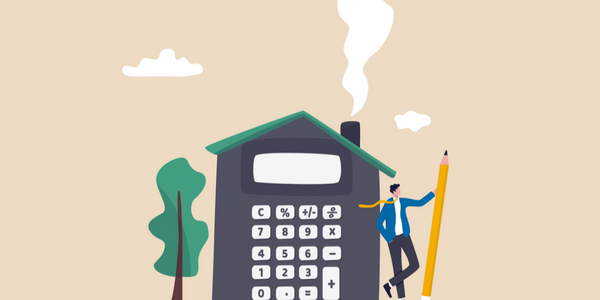
If you’re in need of cash but already have a killer rate on your first mortgage, and you don’t want to pay the high interest rates associated with a credit card, then a home equity line of credit—HELOC for short—may be the perfect solution. HELOCs work by utilizing the equity in your home. You’ve worked hard and consistently made your monthly payment, so why not let all the equity you’ve built up in your home now work for you?

What Is a Home Equity Line of Credit?
A HELOC is essentially a loan you’re able to take out with your home as collateral, but you use only what you need, and pay on only what you use. This is different from a second mortgage, which is a lump sum with a predetermined payment schedule.
HELOCs have two separate phases. The first phase is the draw period. This is when your HELOC is open and you can borrow as often and as much as you need, up to your credit limit. During this phase, you pay interest only on the outstanding balance, whether that’s done in multiple draws or in one lump sum.
The second phase is the repayment period. During this time, you won’t be able to access any more money and must make payments to pay off the balance you owe. Though every loan is different, if you opt for, say, a 30-year HELOC, then the draw period may be 10 years, with a 20-year repayment period.
The great thing about a home equity line of credit is that it’s there when you need it. With a personal or straight second loan, you’re borrowing a lump sum that must be paid back in full, with interest. With a HELOC, the funds are there…but you’re paying interest only on the amount you choose to withdraw. It’s funds on demand in the best possible way!
What Can I Use a HELOC For?
Anything, really! Your equity is your equity, so your money is your money.
You want to use a HELOC responsibly, though. After all, it does need to be paid back with interest. Many people use HELOCs to pay off high-interest debts like credit cards or medical bills. Some also use HELOCs to tackle home improvement projects, since that money is going right back into their house anyway.
You can even leverage the equity in your home to help pay for another home. That’s right: You can draw funds from your HELOC for a down payment on another property, be it a second home, vacation property, or some other type of investment. Of course, emergencies do come up, and a HELOC can assist with those as well, allowing you instant access to cash when you need it the most.
Pros and Cons
A home equity line of credit can be a great way to consolidate debt at a lower interest rate, carry out some repairs or remodels, or save the day in the case of an emergency.
Its on-demand nature also allows you to borrow only what you truly need, so you pay for only what you use. When you’re taking out a new loan, on the other hand, you must decide upfront how much you’ll need—and you’ll pay the interest on that loan amount regardless of how much you use.
Credit card repayments can add up, particularly with home repairs or emergencies. A HELOC prevents you from paying all that added interest if, say, a home improvement project didn’t end up being as costly as you thought or that emergency wasn’t as big as expected.
The interest you pay on a HELOC may also be tax-deductible if the funds are used for home improvements. However, you should be sure to talk to your tax professional about it.
As great as a HELOC can be, you have to be prepared for the trade-off. Your house will be used as collateral on the loan, so you could be at risk of losing your home if you can’t pay back your HELOC.
You also have to be prepared for rate and payment increases if you take out a HELOC. A home equity line of credit has an adjustable rate that varies with the market. Therefore, you need to make sure you understand what the potential highs and lows can be with regard to rate.
You’ll also need to be prepared to pay back the balance during the repayment period. It can be easy to get used to paying only the interest during the draw phase. Check with your Loan Advisor to see what the maximum payments could be if you tap the entire available balance.
A home equity line of credit application is similar to a home loan application. It’s actually a little faster and easier, but it has fees for closing costs and the like.
A HELOC will generally require the borrower to have at least 15% to 20% equity built up in their home. Of course, it’s important to keep this in mind if you’re thinking of selling your home anytime soon. A home equity line of credit won’t prevent you from selling your home, but it will need to be paid back out of the sales proceeds, which means less profit for you.
For those reasons, a HELOC shouldn’t be used for everyday expenses or unnecessary purchases. Its best use is to pay down or consolidate high-interest debt, reinvest in your current home, or purchase another home that would be a positive addition to your portfolio.
APM’S HELOC Program
APM is happy to offer qualified borrowers a credit limit of up to $350,000 based on equity and credit qualifications. Our HELOCs have a 30-year variable term, with a 10-year interest-only draw period. Borrowers can qualify with a credit score as low as 680, and self-employed income is accepted.
Our HELOC program is available as a standalone or as a purchase piggyback created simultaneously with your initial mortgage.
If a home equity line of credit sounds like it could be the right fit for you, click here to connect with an APM Loan Advisor today.








